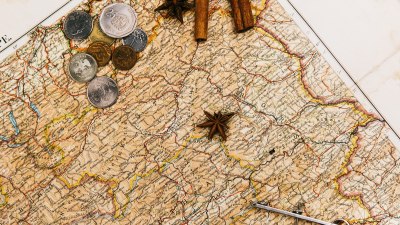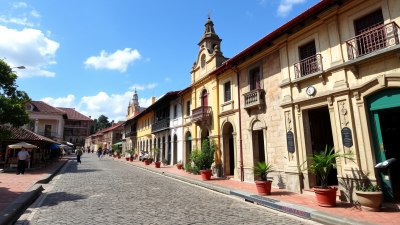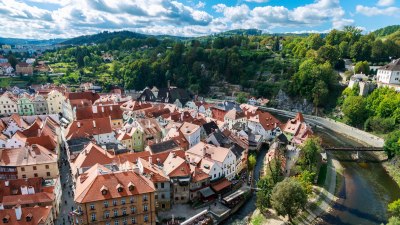How Different Cultures Celebrate Easter in Spring
Explore diverse Easter celebrations around the world and their unique cultural significance.

Image by frimufilms on Freepik
Easter, a significant celebration in Christianity, signifies the resurrection of Jesus Christ, falling anywhere between March 22 and April 25. Yet, beyond its religious aspect, Easter is a tapestry of cultural traditions and practices that vary widely around the globe. From playful egg hunts in America to solemn processions in Spain, the way Easter is celebrated can offer deep insights into the traditions and values of different cultures. This article aims to explore how various cultures observe Easter during the spring, highlighting unique customs, historical contexts, and the joyous spirit that transcends borders.
The Origins of Easter
Understanding the diverse ways of celebrating Easter begins with its origins. The word 'Easter' is derived from 'Eostre,' a pagan goddess of spring and fertility, and while it has distinctly Christian roots, the ways it is celebrated often integrate local customs and beliefs. In most cultures, Easter signifies a rebirth of nature, coinciding with the arrival of spring. This connection to spring lends itself to many symbols of fertility and renewal, such as eggs and bunnies, which pervade Easter celebrations across various cultures.
Easter in the United States
In the United States, Easter is celebrated with a mix of religious traditions and secular festivities. Family gatherings often include a grand feast, typically featuring roast lamb, ham, or a variety of spring vegetables. One of the most popular traditions is the Easter egg hunt, where children search for eggs hidden in gardens or homes. These eggs can be hard-boiled and dyed or plastic eggs filled with candies. The White House also hosts an annual Easter Egg Roll on the lawn, where children roll decorated eggs with wooden spoons.
In addition to these fun activities, many Americans attend church services on Easter Sunday, often adorning their best outfits, symbolizing the renewal of life. In some communities, sunrise services are held to celebrate the resurrection, with the early morning light marking the triumph of Jesus over death.
Easter in Italy
Italy, known for its deep-rooted traditions, celebrates Easter with a combination of solemnity and festivity. The Holy Week leading up to Easter Sunday is filled with various religious observances, including processions, masses, and reenactments, particularly prevalent in cities like Florence and Rome. One of the most famous processions is the 'Scoppio del Carro' in Florence, where a cart filled with fireworks is ignited to ensure a prosperous harvest.
On Easter Sunday, Italians enjoy a festive meal, often beginning with a traditional lamb dish called 'Agnello al Forno.' Desserts play a significant role as well, with 'Colomba di Pasqua,' a dove-shaped cake rich in candied fruits, becoming a beloved feature of Easter celebrations.
Easter in Spain
In Spain, Easter or 'Semana Santa' (Holy Week) encompasses one of the country’s most important cultural events, celebrated with dramatic processions showcasing religious statues, music, and solemnity. Each region has its unique customs, with Seville hosting one of the most famous Semana Santa festivals. Participants dress in traditional robes, and the processions draw crowds who gather to witness the devotion on display.
On Easter Sunday, the mood lightens as families gather for celebratory meals, often featuring 'torrijas,' a Spanish version of French toast, and other local delicacies. The contrast of solemnity during Holy Week and the joyous spirit of Easter Sunday exemplifies the cultural passion embedded in Spanish traditions.
Easter in Greece
In Greece, Easter, or 'Pascha,' is the most significant religious celebration, deeply embedded in the Orthodox Christian tradition. Celebrations start on Holy Saturday with a midnight service and the tradition of 'Holy Light,' where the flame from the Holy Tomb is passed to worshippers. This marks the transition into Easter Sunday, a day filled with joy and feasting.
The Easter meal often features 'magiritsa,' a traditional soup made from lamb intestines and herbs, while roasted lamb is the star of the table later in the day. Another custom that stands out is the red-dyed eggs, representing the blood of Christ, which are used in a game called 'tsougrisma,' where two eggs are struck against each other, with the winner enjoying good fortune.
Easter Traditions in Germany
Germany boasts a variety of unique Easter customs, many of which are age-old pagan traditions transformed through the lens of Christianity. One widely recognized tradition is the Easter tree, where decorated eggs and other ornaments are hung on branches, symbolizing new life. Many towns also hold Easter markets showcasing handcrafted wares, while children participate in egg hunts much like in the United States.
On Good Friday, many Germans observe a day of fasting and reflection, while Palm Sunday features the creation of palm branches that are often woven into intricate designs. Easter Sunday, however, bursts forth with festivities, from elaborate meals featuring lamb and spring vegetables to sweet treats like 'Osterbrot,' a special Easter bread that is both a delight for the senses and a tradition cherished through generations.
Easter in the Philippines
The Philippines presents one of the most distinct cultural interpretations of Easter, heavily influenced by its Catholic heritage. The Holy Week is a time of penance and reflection, with many engaging in traditional activities such as the 'Pabasa,' a continuous reading of the Passion of Christ, and 'Senakulo,' a dramatic reenactment of Christ's crucifixion. These practices reflect the depth of faith held within the Filipino community.
On Easter Sunday, however, the atmosphere transforms as families celebrate the resurrection with 'Salubong,’ a pre-dawn ritual that symbolizes the meeting of the risen Christ and the Virgin Mary. This is often followed by a festive meal, where various local delicacies are enjoyed, including rice cakes and roasted meats.
Celebrations in Latin America
Throughout Latin America, Easter celebrations blend indigenous customs with Catholic traditions, resulting in vibrant and colorful observances. In countries like Mexico and Guatemala, Holy Week is marked with lavish processions, colorful carpets made of sawdust and flowers, and theatrical reenactments of the Passion. In Antigua, Guatemala, the streets are adorned with elaborate alfombras (carpets) made of flowers and colored sawdust that provide a stunning backdrop for the processions.
Easter Sunday, particularly in Mexico, is a time for joyous celebrations, with families gathering to feast on traditional dishes such as 'tacos de pescado' (fish tacos) and participate in festive events. The blending of cultural heritage and spiritual significance during this time exemplifies the unity and vibrancy inherent in Latin American traditions.
The Common Threads of Easter
Despite the myriad of ways Easter is celebrated around the globe, common threads weave through each tradition. The fundamental theme of rebirth and renewal echoes in the choice of symbols like eggs and flowers, representing new beginnings. Family gatherings, feasts, and communal activities form another shared aspect, emphasizing the importance of togetherness during this time.
Furthermore, the rituals of reflection and worship, whether through solemn processions or joyous traditions, serve as a reminder of the spiritual significance that Easter holds for believers worldwide. The global celebration of Easter showcases the beauty of cultural diversity and the shared human experience of hope and renewal that springs forth each spring.











